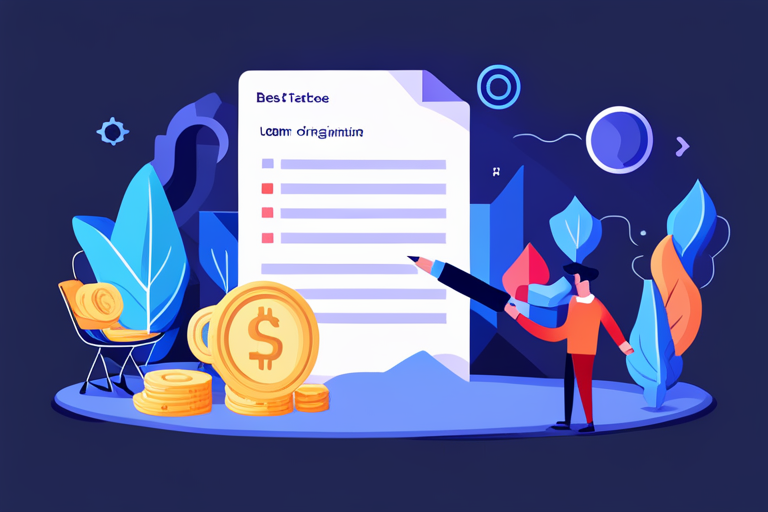best-practices-in-loan-origination-software-for-real-estate-lenders-a-comprehensive-guide

Best Practices in Loan Origination Software for Real Estate Lenders: A Comprehensive Guide
Introduction
The real estate industry is undergoing a digital transformation, with many lenders embracing technology to streamline their loan origination processes. Loan Origination Software (LOS) has emerged as a crucial tool, empowering lenders to automate tasks, improve efficiency, and enhance the customer experience. This comprehensive guide provides an in-depth exploration of the best practices for selecting and implementing LOS solutions in the real estate lending landscape.
Benefits of Loan Origination Software
- Automated Workflows: LOS automates repetitive tasks such as data entry, document generation, and workflow management, freeing up lenders to focus on more strategic initiatives.
- Improved Efficiency: By streamlining processes, LOS reduces processing times, lowers operating costs, and enhances overall operational efficiency.
- Enhanced Customer Experience: With seamless online portals and mobile applications, LOS provides borrowers with real-time updates, improved communication, and a more convenient borrowing experience.
- Increased Compliance: LOS automates compliance checks and ensures adherence to regulatory requirements, reducing the risk of penalties and reputational damage.
- Data Analytics and Reporting: LOS captures valuable data that can be analyzed to generate insights, identify trends, and make informed decisions.
Choosing the Right LOS: Key Considerations
1. Business Requirements: Define your specific business needs, including loan types, underwriting criteria, customer demographics, and regulatory requirements. 2. Functionality: Evaluate the core features of the LOS, such as loan application, workflow management, document generation, underwriting, and reporting capabilities. 3. Integrations: Ensure that the LOS integrates seamlessly with your other software systems, such as CRM, accounting, and document management. 4. Scalability: Consider the future growth potential of your business and choose a LOS that can scale to meet increasing demand without sacrificing performance. 5. Vendor Support: Assess the quality and availability of vendor support, including training, implementation assistance, and ongoing maintenance.
Implementation Best Practices
1. Project Management: Establish a clear project plan with defined timelines, milestones, and responsibilities. 2. Requirements Gathering: Conduct thorough stakeholder interviews and workshops to gather detailed requirements and ensure alignment. 3. System Configuration: Tailor the LOS to your specific business needs by configuring workflows, underwriting rules, and user roles. 4. Data Migration: Migrate existing loan data and historical records to the new LOS with utmost accuracy and data integrity. 5. Testing and Validation: Perform comprehensive testing to verify the functionality and accuracy of the LOS before going live.
Best Practices for Using LOS
1. Standardization of Processes: Ensure consistency and efficiency by standardizing loan origination processes across all users. 2. Training and Adoption: Provide comprehensive training to all users and encourage adoption of the new system. 3. Data Entry Accuracy: Emphasize the importance of accurate data entry to maintain data integrity and facilitate smooth loan processing. 4. Workflow Management: Monitor workflows closely to identify bottlenecks and optimize processes for faster loan approvals. 5. Compliance Monitoring: Use the LOS’s compliance features to ensure adherence to regulatory requirements and mitigate risk.
Emerging Trends in LOS
1. Artificial Intelligence (AI): AI algorithms are improving LOS functionality, automating underwriting decisions, and enhancing risk assessment. 2. Robotic Process Automation (RPA): RPA tools are being integrated with LOS to automate routine tasks and further streamline operations. 3. Mobile Functionality: Mobile-friendly LOS applications empower lenders and borrowers to access loan information and manage processes from anywhere. 4. Cloud Computing: Cloud-based LOS solutions offer scalability, flexibility, and reduced hardware costs. 5. Data Analytics and Predictive Modeling: LOS is leveraging data analytics and predictive modeling to identify profitable loan opportunities and improve risk management.
Conclusion
By adopting best practices in loan origination software selection, implementation, and usage, real estate lenders can transform their loan origination processes, enhance efficiency, improve customer satisfaction, and gain a competitive advantage in the digital age.
Call to Action
To learn more about the transformative power of loan origination software, contact Fundingo today by calling toll-free at (877) 227-7271.